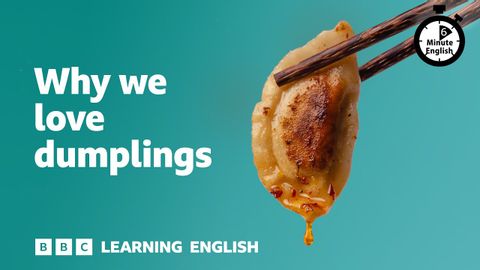我們為什麼愛吃餃子 ⏲️ 6 分鐘英語 (Why we love dumplings ⏲️ 6 Minute English)
joey joey 發佈於 2024 年 08 月 25 日  沒有此條件下的單字
沒有此條件下的單字- n.簡述重點;翻新胎面;重述要點;翻新的輪胎
- v.t.概括
US /voˈkæbjəˌlɛri/
・
UK /və'kæbjələrɪ/
US /ˈstepəl/
・
UK /ˈsteɪpl/
- n. (c./u.)主食;主食;主要產品;釘書釘;必需品
- v.t.用釘書釘釘住
US /ɪkˈspɛrəmənt/
・
UK /ɪk'sperɪmənt/
- n. (c./u.)實驗;嘗試
- v.t./i.進行實驗;進行試驗
